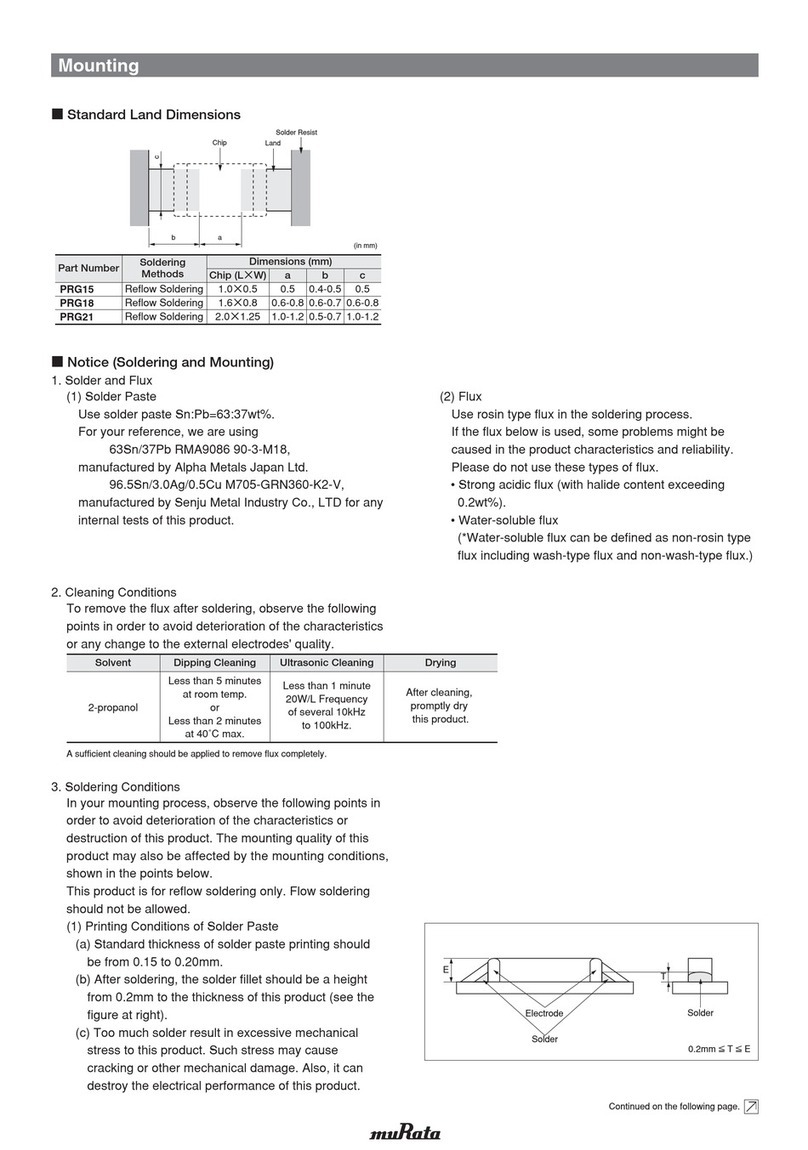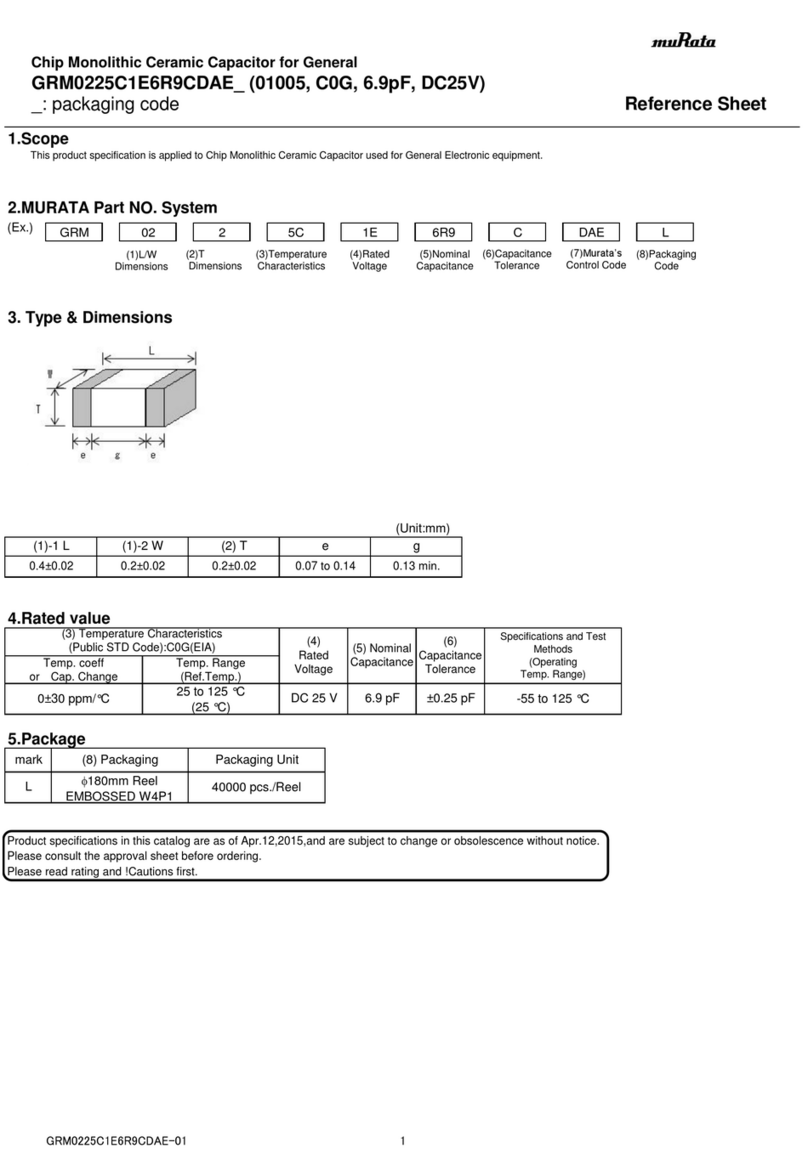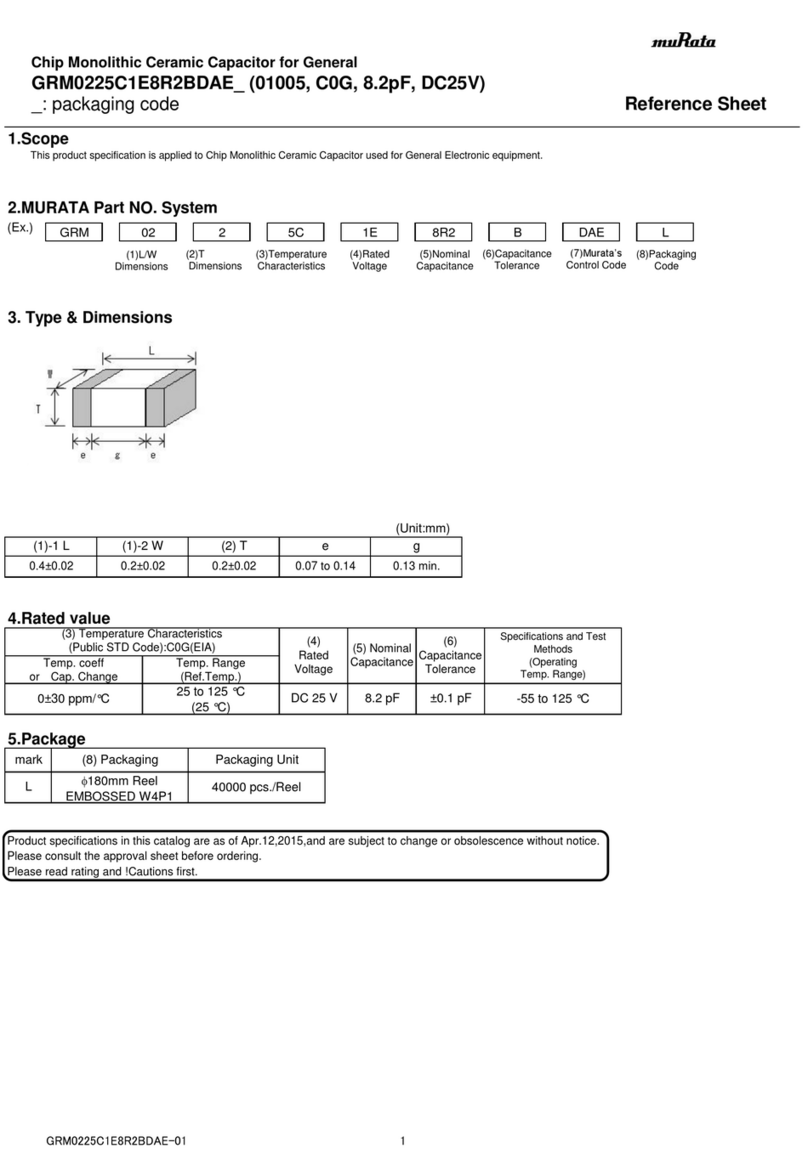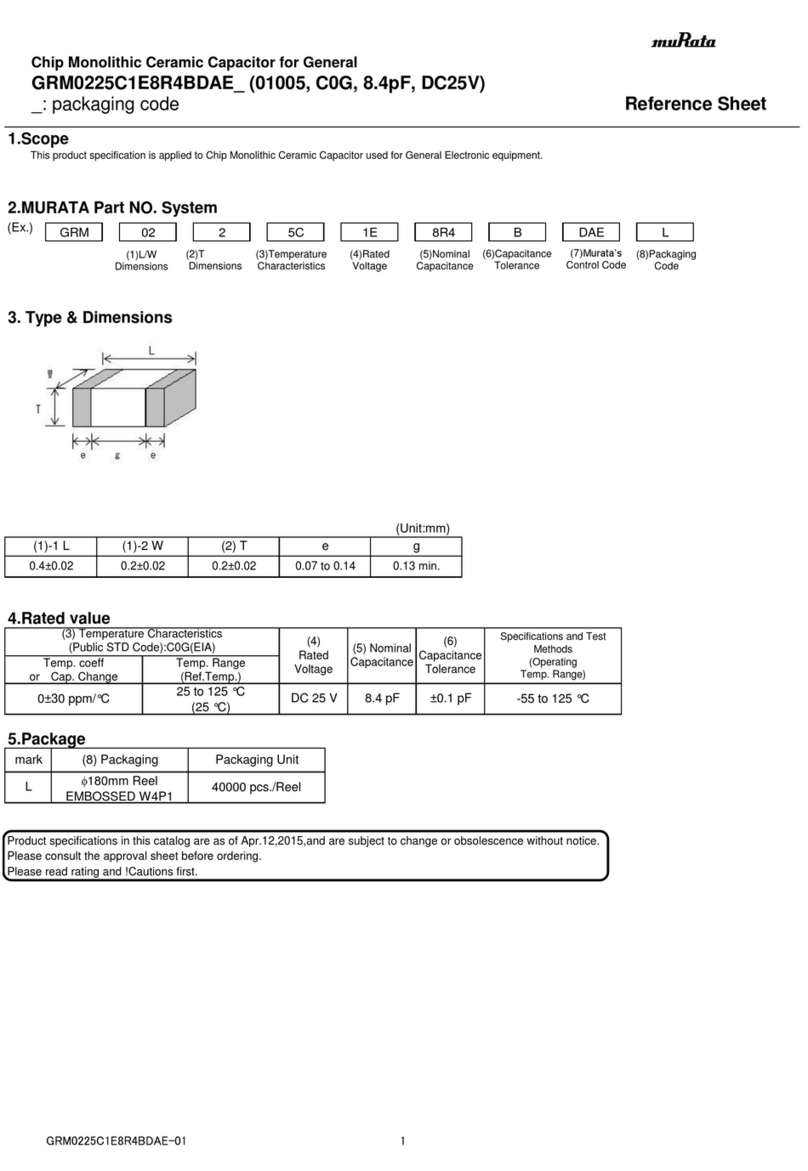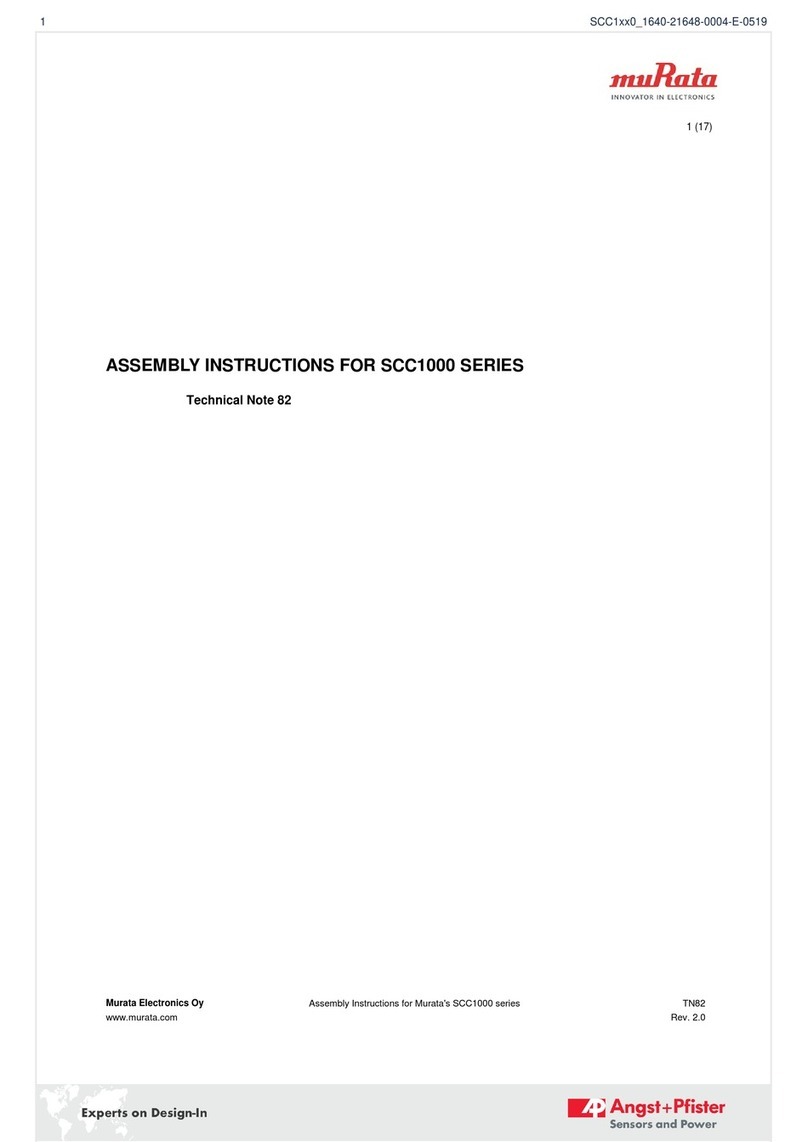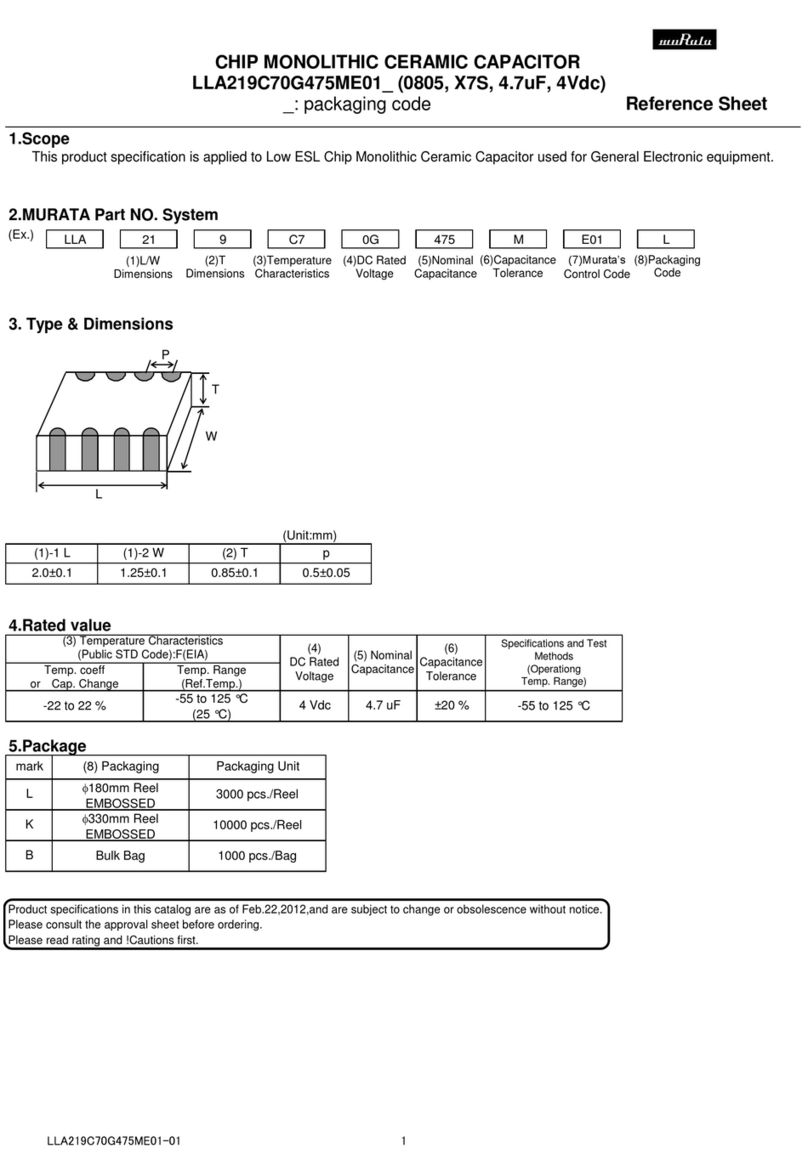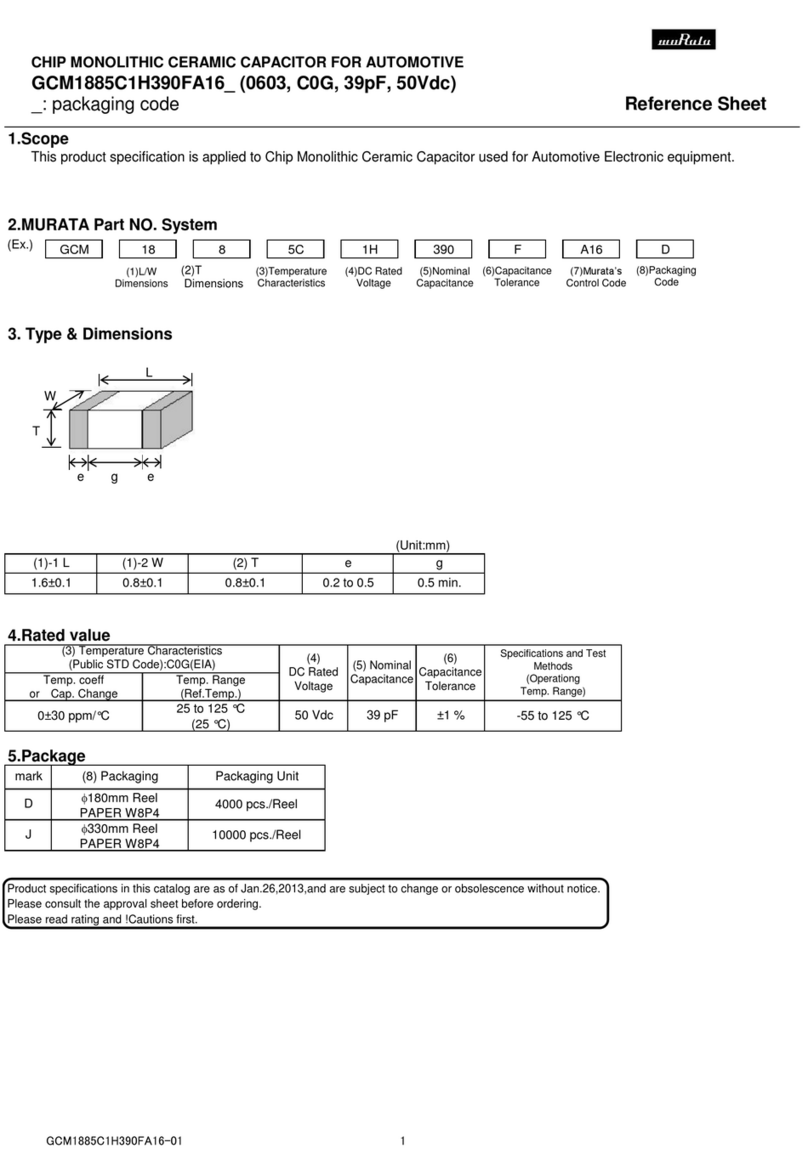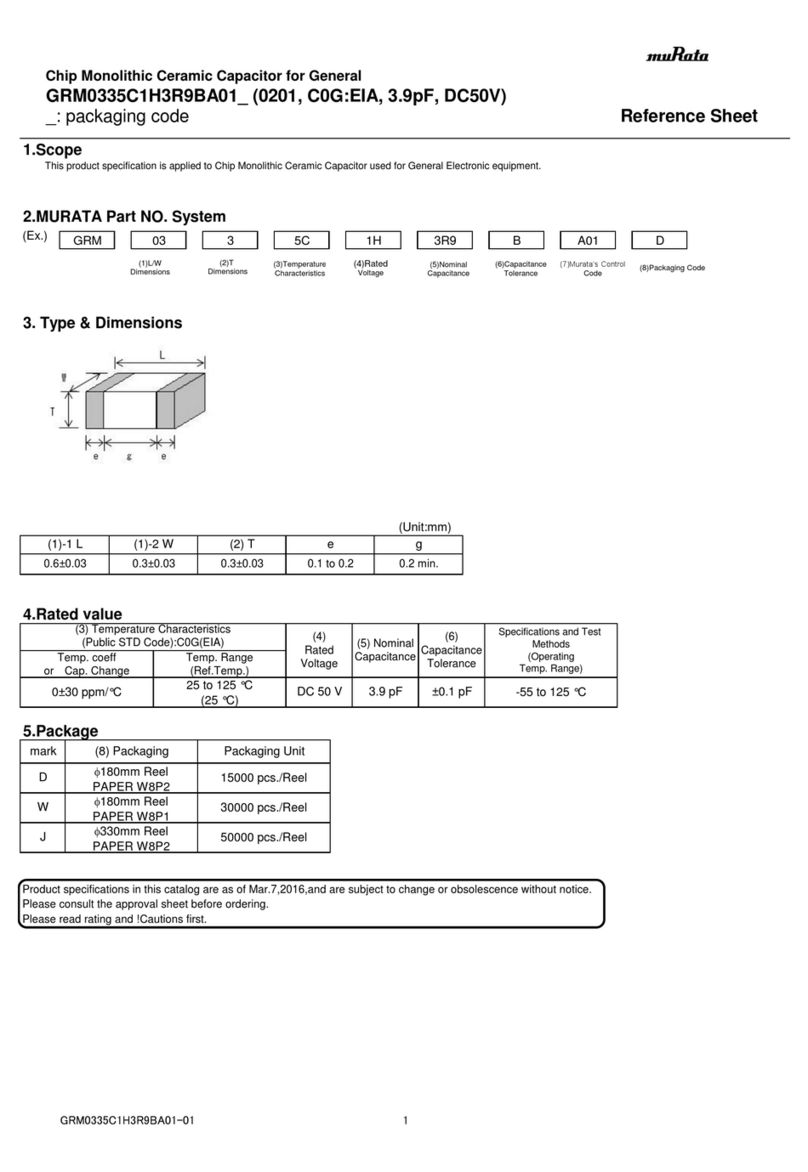General description
This document describes the attachment techniques recommended by Murata* for their pre-bumped and un-bumped
silicon capacitors on the customer substrates. This document is non-exhaustive. Customers with specific attachment
requirements or attachment scenarios that are not covered by this document should contact Murata.
Handling precautions and storage
Silicon die must always be handled in a clean room environment (usually class 1000 (ISO 6)) but the assembled
devices don’t need to be handled in such an environment as the product is already well packed. The remaining
quantities have to be repacked immediately after any process step, in the same conditions as before the opening
(ESD bag + N2).
Store the capacitors in the manufacturer's package in the following conditions without a rapid thermal change in an
indoor room: • Temperature: -10 to 40 degree C
• Humidity: 30 to 70%RH
Avoid storing the capacitors in the following conditions:
(a) Ambient air containing corrosive gas. (Chlorine, Hydrogen sulfide, Ammonia,
Sulfuric acid, Nitric oxide, etc.)
(b) Ambient air containing volatile or combustible gas
(c) In environments with a high concentration of airborne particles
(d) In liquid (water, oil, chemical solution, organic solvents, etc.)
(e) In direct sunlight
(f) In freezing environment
To avoid contamination and damage like scratches and cracks, our recommendations are:
•Die must never be handled with bare hands
•Avoid touching the active face
•Do not store and transport die outside protective bags, tubes, boxes, sawn tape
•Work only in ESD environments
•Plastic tweezers or a soft vacuum tool are recommended to remove the silicon die from
the packing.
Standard packing is tape & reel for die size larger than 0201 but silicon capacitors can be provided within waffle pack,
gel
pak or sawing frame. Please contact the Murata sales contact for drawing and references ([email protected]om).
